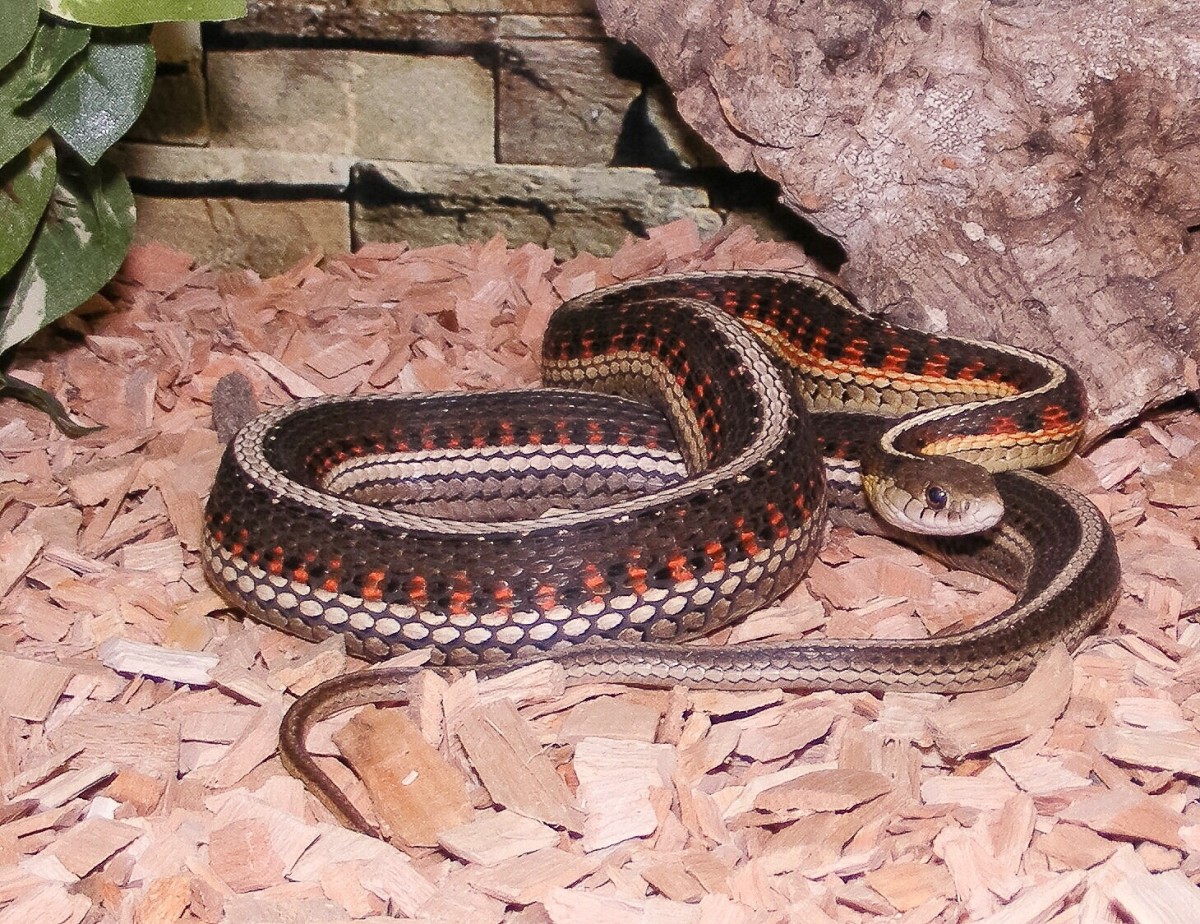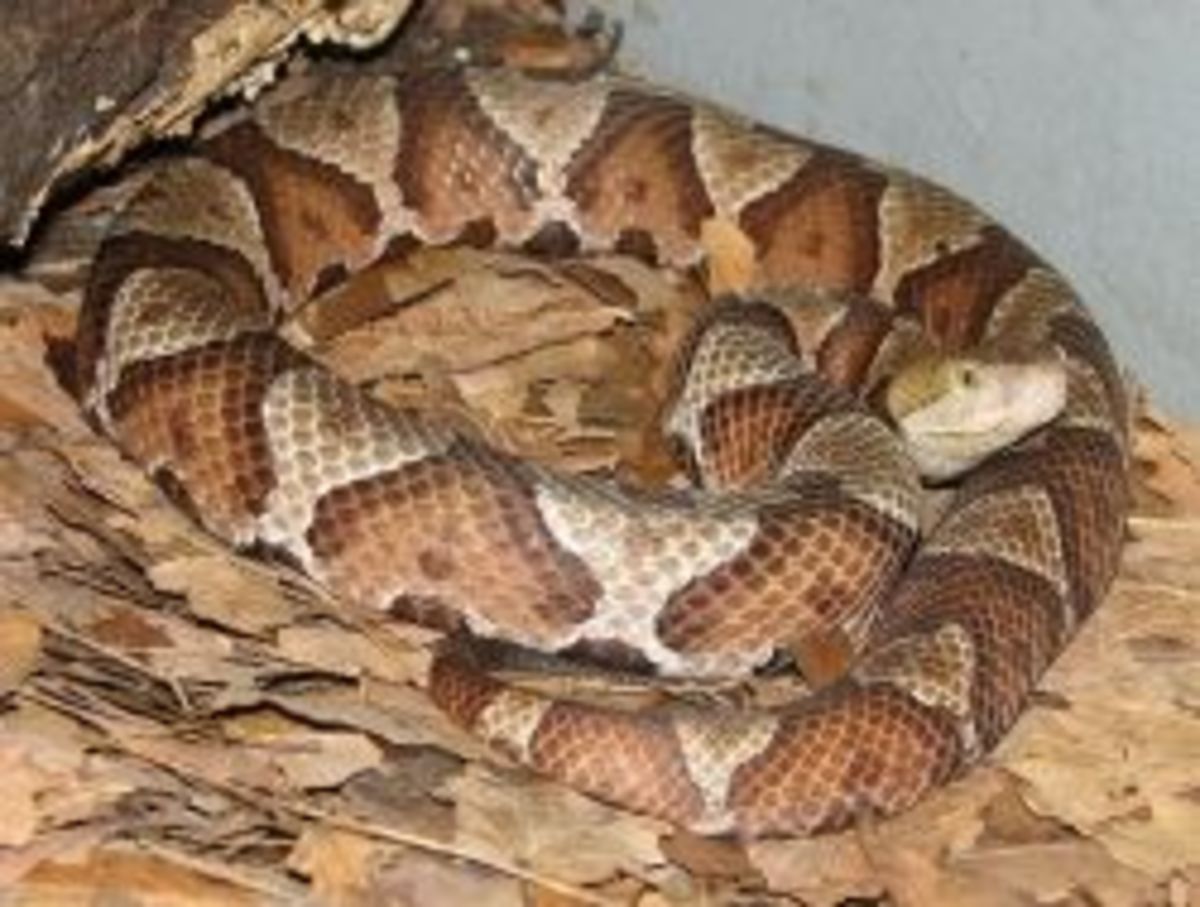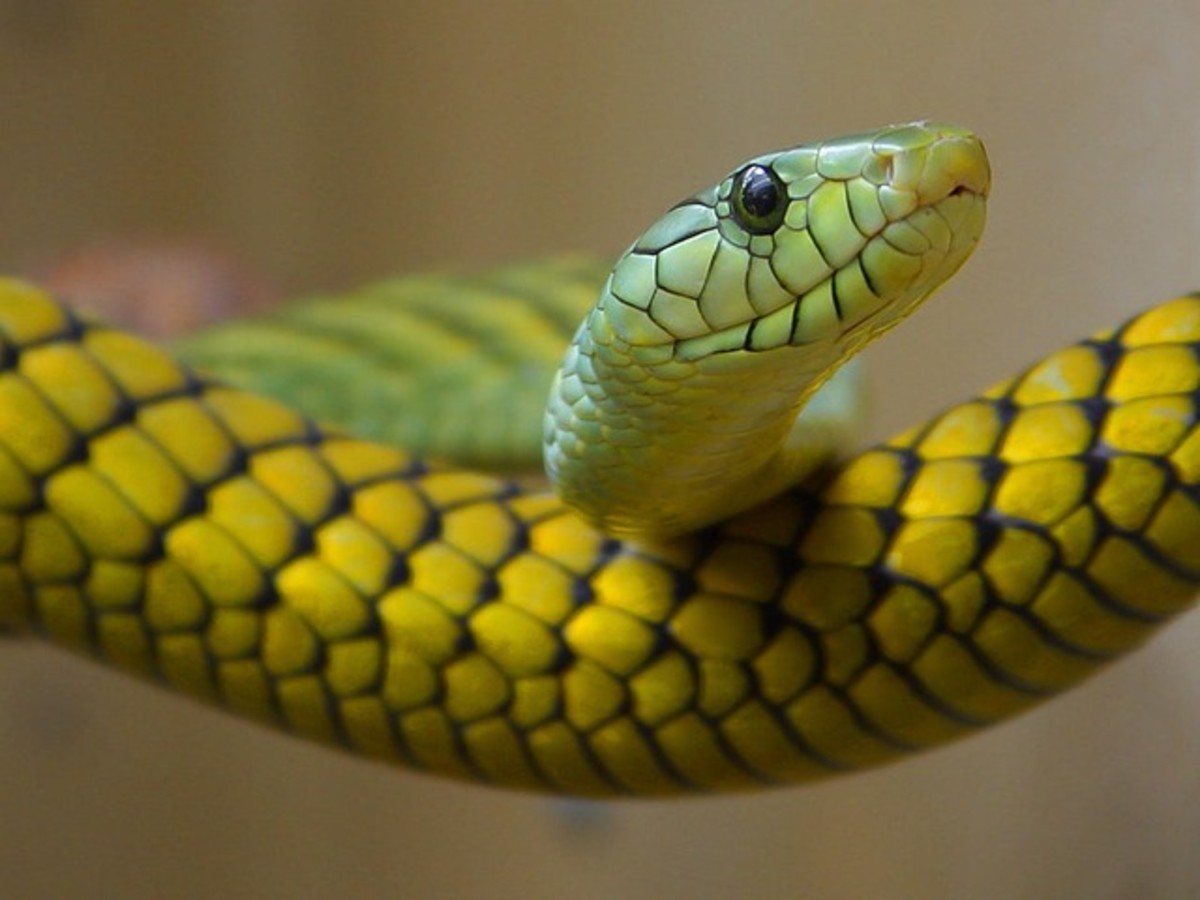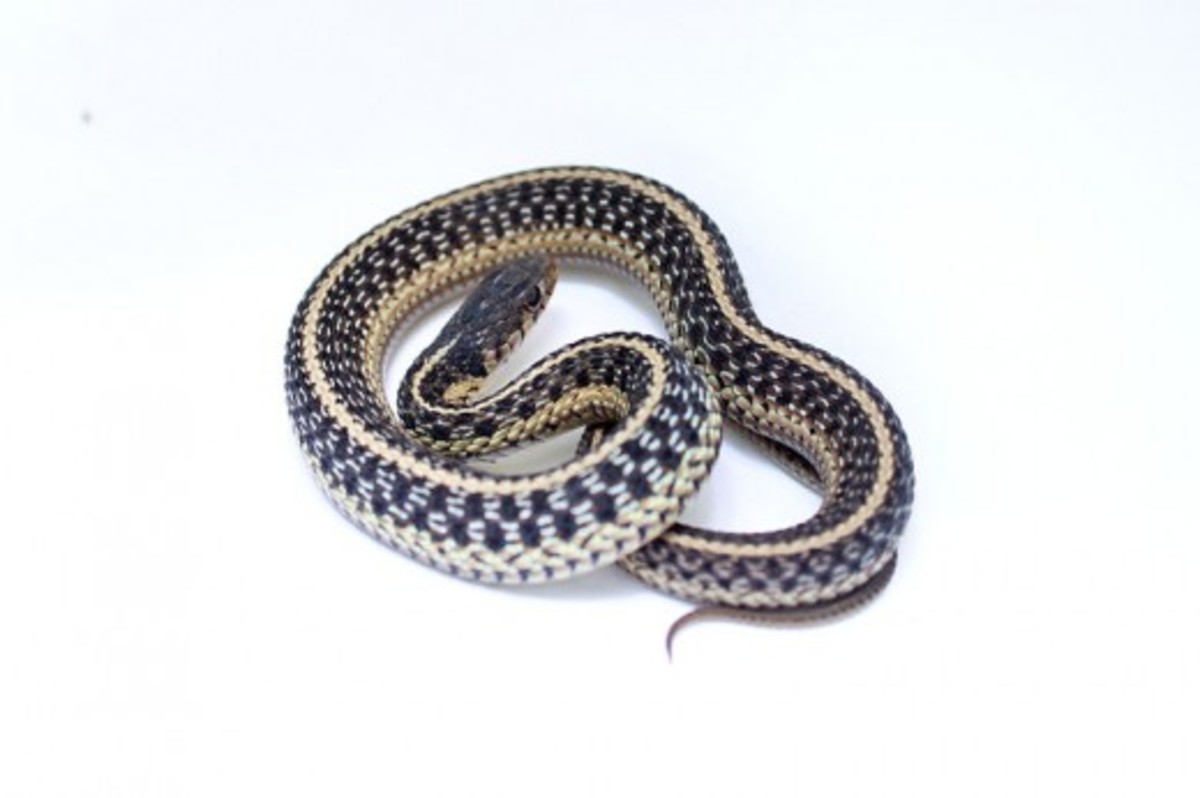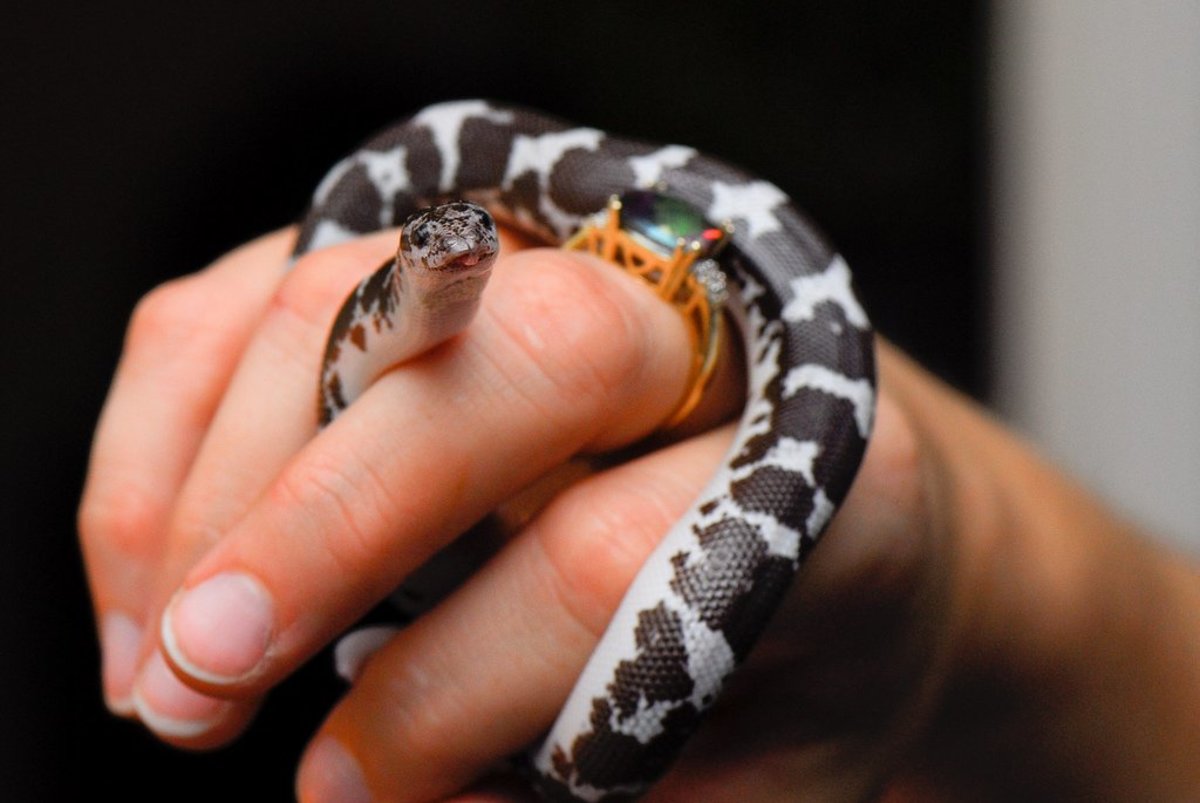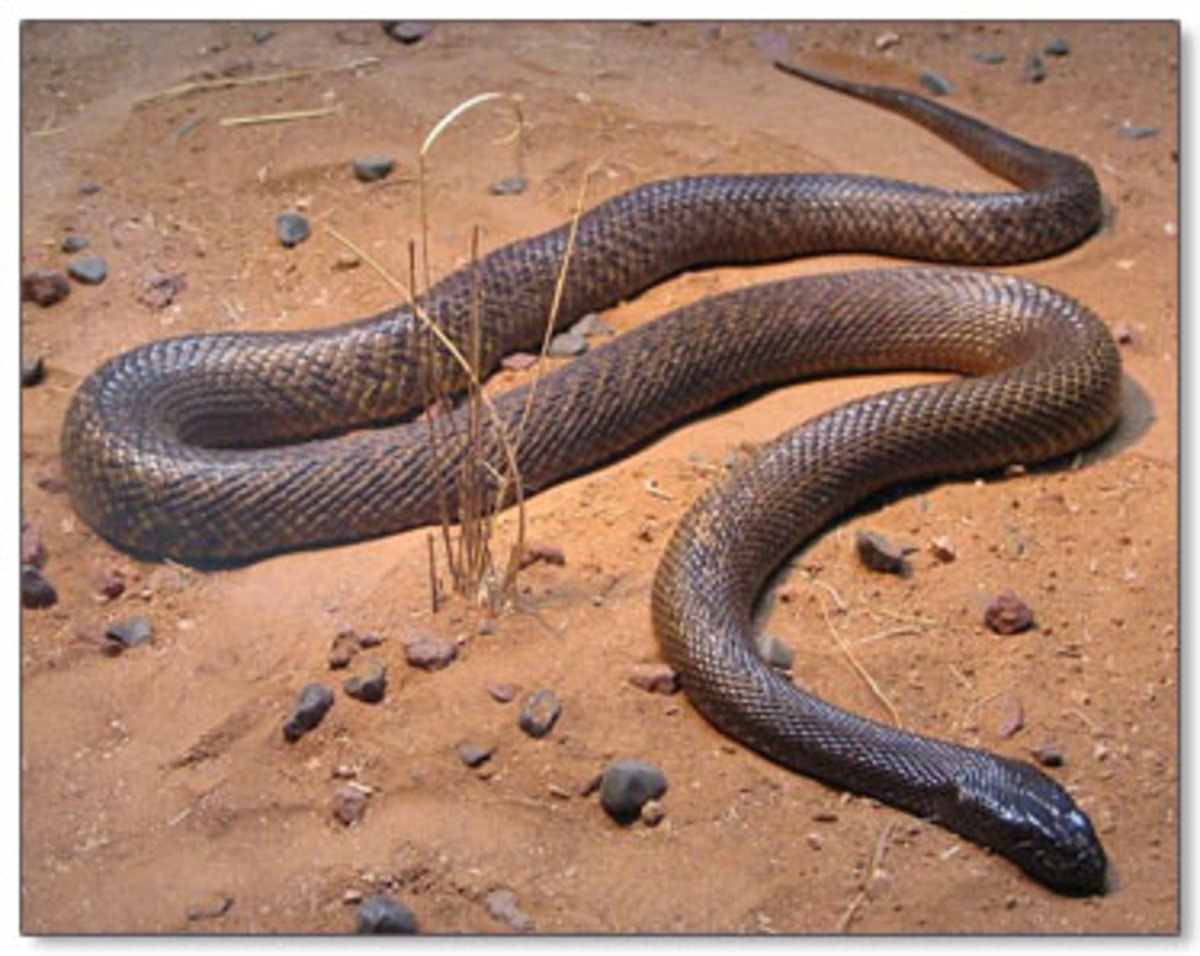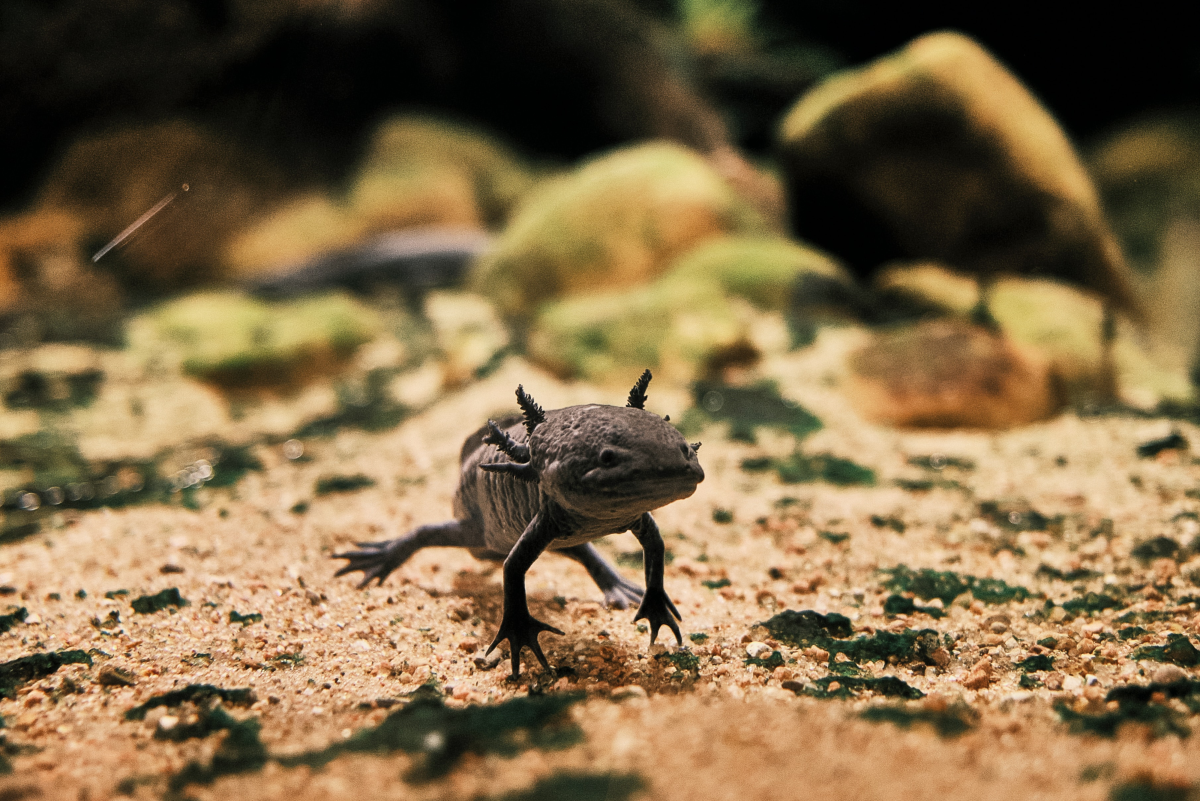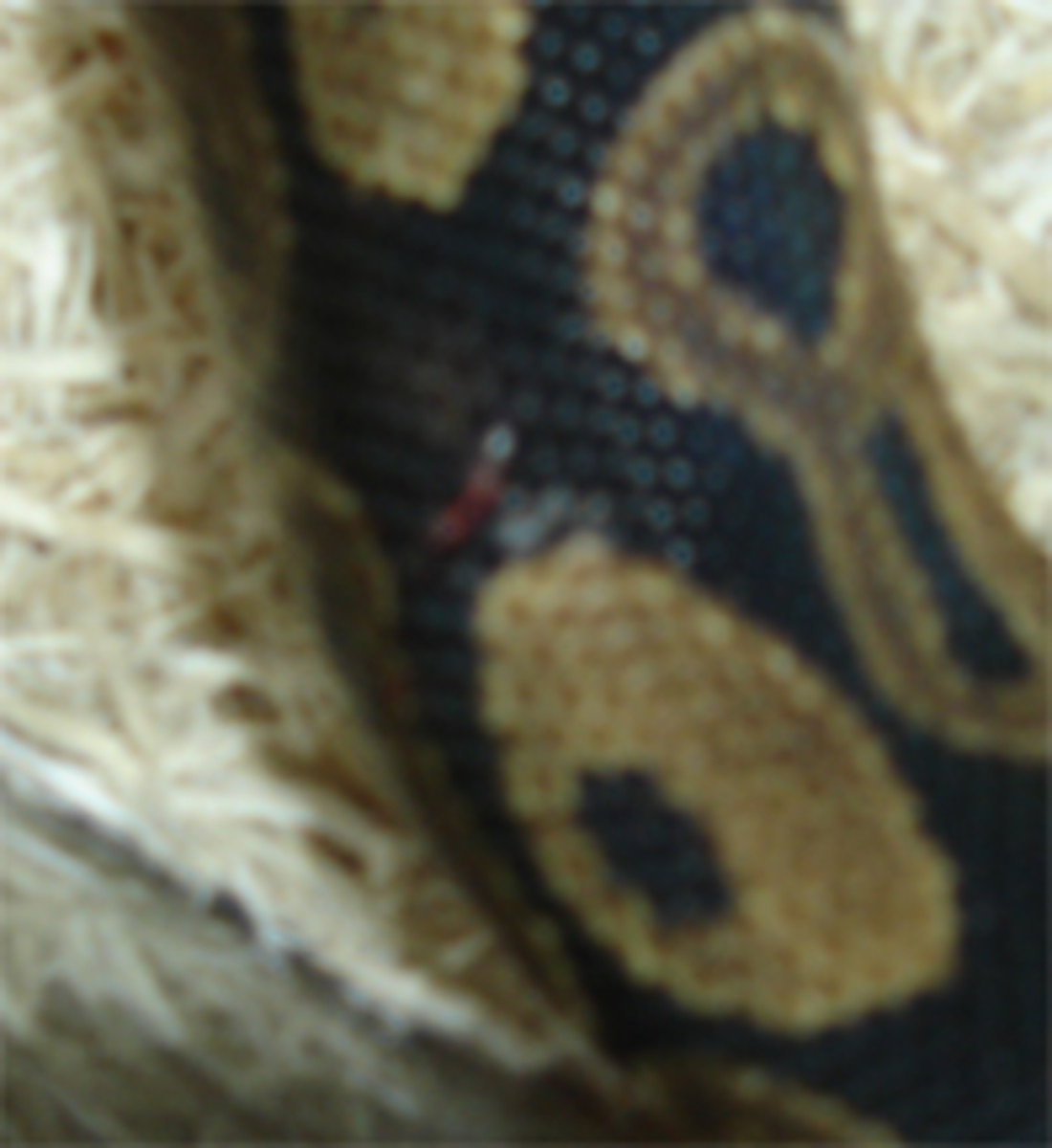Ring-necked Snake of Louisiana
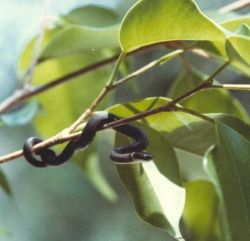
Reptile: Mississippi Ring-necked Snake, Diadophis punctatus (Linnaeus)
The Ring-necked Snake is a small, harmless, non-poisonous snake that lives in forested areas all over the Southeastern United States. This beneficial reptile spends most of the daylight hours hiding under logs, but is active at night during the warm months of the year. Ring-necked Snakes are egg-layers and the females brood their eggs. Because of it's diet of earthworms and small reptiles and amphibians, it is often adversely affected by environmental alterations that destroy natural habitats or when pesticides are introduced into the ecosystem.
All photos on this page are the property of Y.L. Bordelon (unless otherwise noted) All Rights Reserved.
The Mississippi Ring-necked Snake is the only species that occurs in Louisiana.
Ring-necked Identification, Habits and Habitat
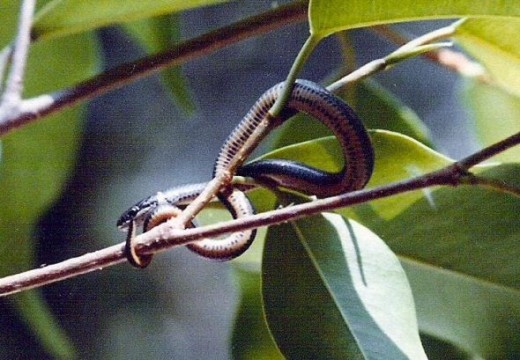
A small, moderately short (up to 30 inches) snake with a black or slate gray back with a bright yellow neck band and belly. The belly usually has small black spots, the dorsal scales are smooth, in 15 rows and the anal plate is divided. Babies look like the adults.
The Mississippi Ring-necked Snake is the only species occurring in Louisiana. It occurs over most of the state, except the Marsh and is very rare in the Prairie, the Atchafalaya and Tensas basins and the Longleaf Forest south of the Red River.
Ring-necked and Pine Woods
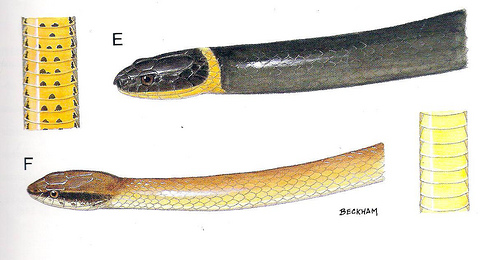
E. Ring-necked snake, Diadophis punctatus
F. Pine Woods snake, Rhadinaea flavilata
*Photo Reference: Dundee and Rossman, The Amphibians and Reptiles of Louisiana, LSU Press, 1989
Habitat and Habits
Underbelly
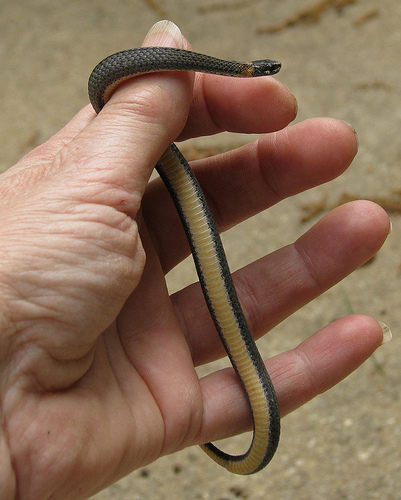
Habits and Habitat
The Ring-necked Snake needs cover and is usually found under logs in forested areas. It can also be found in stumps, beneath boards, railroad ties, bark on fallen trees and brick piles. These small snakes often travel long distances, up to a mile has been recorded and they often travel 200 feet. However, they do not like to cross roads. They are active in the warm months, particularly at night. When picked up or handled it will often coil its tail and display the bright undersurface. They rarely bite humans and are considered harmless. In rare cases when they bite, a burning sensation is sometimes reported. These small snakes eat earthworms and insect larvae as well as small lizards and salamanders.
Reproduction
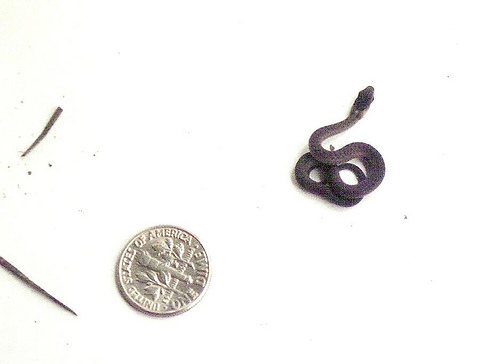
Mating occurs in spring and fall. Ring-necked snakes are egg layers. During courting, male will rub his mouth along the neck of the female and bite her on the neck ring. Interestedly, females can store sperm from fall matings through the winter and fertilization will occur in spring. Females lay from two to ten oblong eggs, which they brood. Good nesting sites are often shared by several females. The eggs hatch in about 7-8 weeks.
Ring-neck Snake in Spring
The photograph below was taken in late March in southeastern Louisiana. We think that this may be a female that will lay her eggs soon. She is much fatter and wider than most Ring-necked snakes.
Many of the photos seen here can be purchased in Naturegirl7's Zazzle Shop as print-on-demand products such as posters, cards, apparel, mugs, etc.
Ring-necked Snake
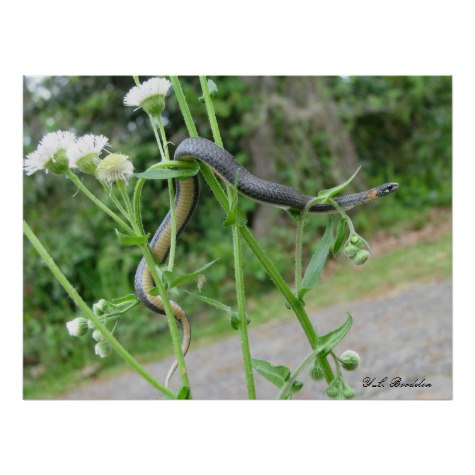
Snakes of the Southeast
This is a "must have" book for all snake lovers who live in the Southeastern United States. It has fabulous photos, maps and accurate information about each species of snake.
Ring-neck Snakes Predators and Defense
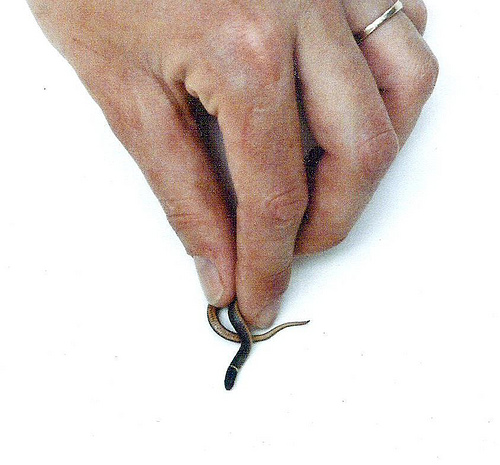
Extensive research has been done on this species. At least eight species of terrestrial snakes prey upon Ring-neck Snakes. Other predators include five species of birds, six native mammals, bullfrogs and toads.
When disturbed their first line of defense is to try to escape. If the log under which they are hiding is turned over, they may momentarily flip over, exposing the bright yellow, orange, or red belly and then quickly turn over and crawl into the dark soil. The maneuver tends to confuse or distract a predator and allow the dark colored snake to escape. These snakes also produce a strong musky odor.
Ring-necked in Fleabane
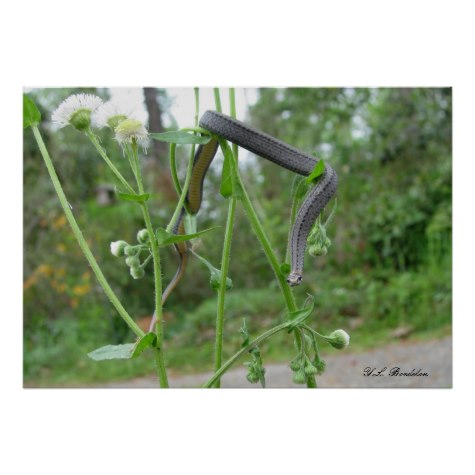
Encyclopedia of Snakes
Conservation
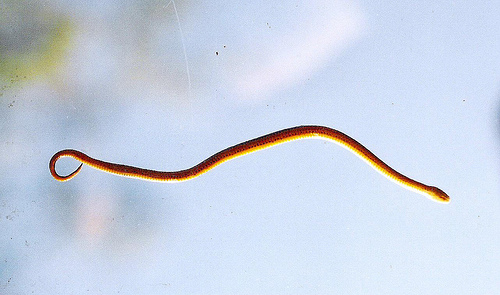
These interesting little snakes require woodland habitats with a broad range of prey so they are vulnerable to environmental changes that destroy natural habitats or that introduce pesticides into the ecosystem.
Reference: Dundee and Rossman, The Amphibians and Reptiles of Louisiana, LSU Press, 1989 and Gibbons and Dorcas, Snakes of the Southeast, U. GA Press, 2005
Tiny Reptile
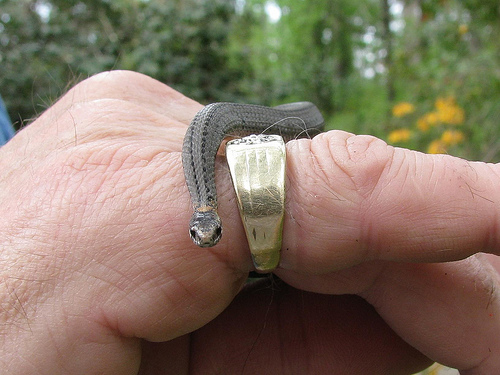
Northern Ring-necked Snake Video
This video shows a northern Ring-necked Snake which is similar to the Mississippi Ring-necked snake of Louisiana.
Speckled Kingsnake Magnet
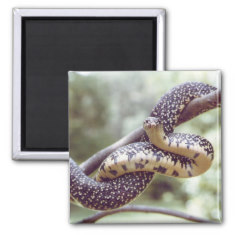
More Snakes by naturegirl7
Designs by naturegirl7
Diamond-back Watersnake Mug
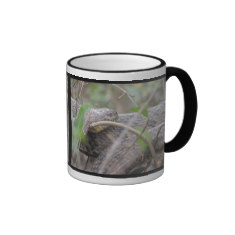
Ring-neck Snake in Fleabane
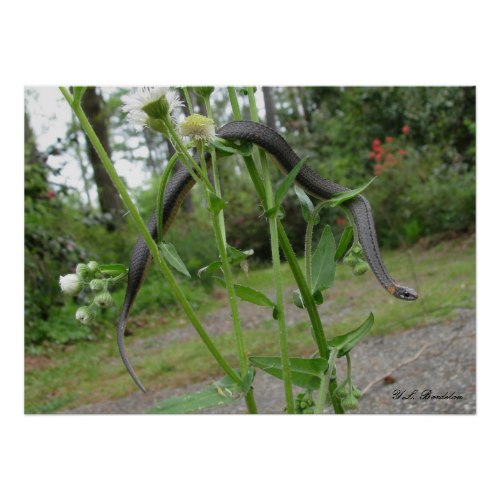
Ringneck Snake Poll
Have you encountered a Ringneck Snake?
Southern Ringneck Snake Photo is public domain
Southern Ring-neck Snake
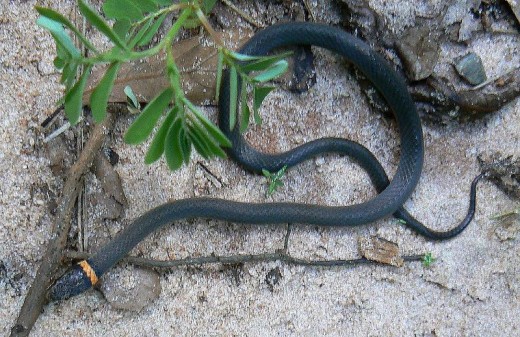
© 2009 Yvonne L B



